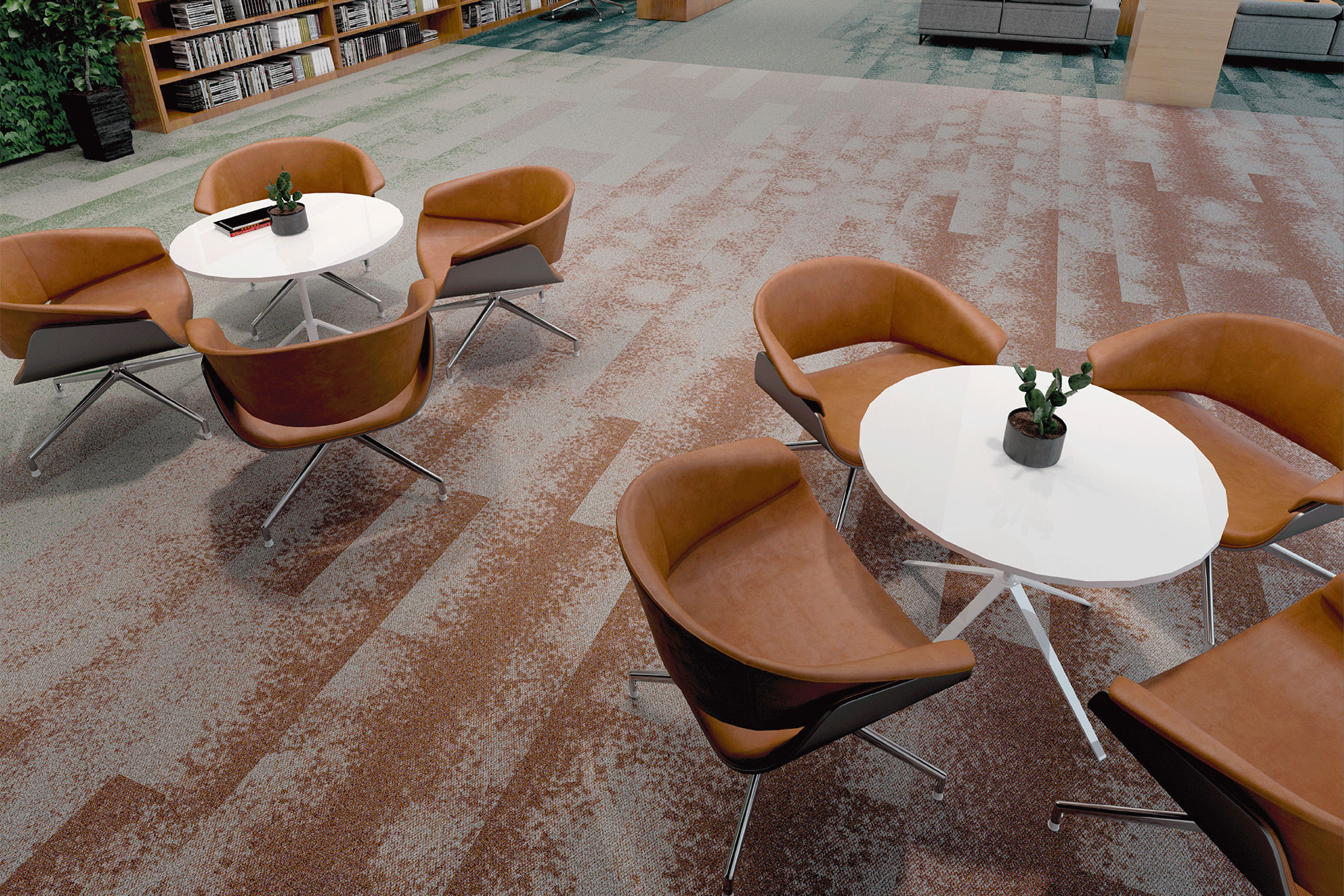According to the World Green Building Council, buildings are currently responsible for 39% of global energy-related carbon emissions, and 11% of those emissions come directly from building materials and construction (commonly referred to as embodied carbon or upfront carbon).
As the world’s population rapidly increases, the global building floor area is expected to double in size. Architecture 2030 shockingly reports this increase as adding an entire New York City to the world every month for the next 40 years.
Between now and 2050, embodied carbon (carbon emissions released before the building is even used) will be responsible for about half of the entire carbon footprint of new construction. We must start now if we want to lower embodied carbon to zero emissions.
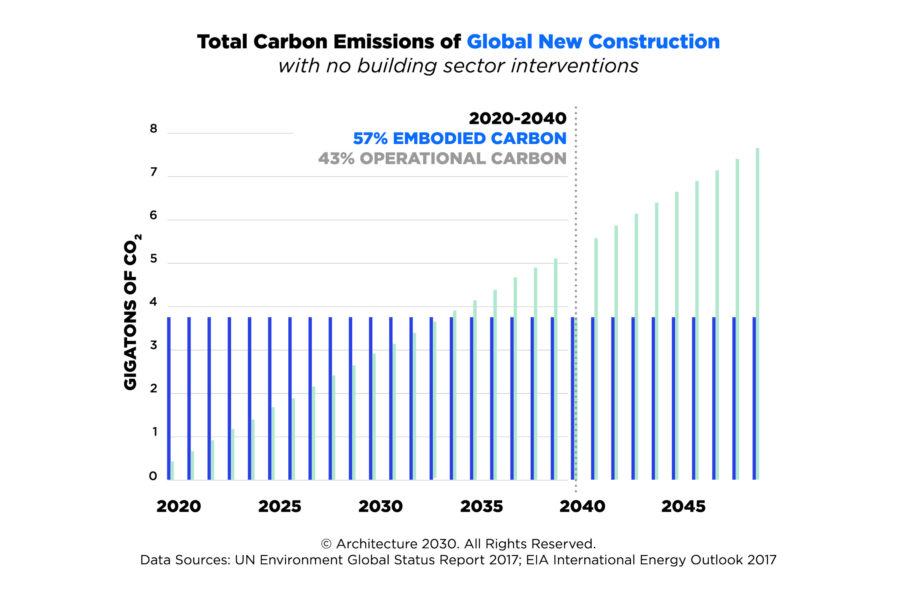 The built environment sector needs to adopt more sustainable and recycled materials and design for deconstruction. As we like to say: Design with the end in mind.
The built environment sector needs to adopt more sustainable and recycled materials and design for deconstruction. As we like to say: Design with the end in mind.
Could the key to more sustainable projects be right under our feet? Carpets hold a 60% share of the US flooring market, with 19 billion square feet sold per year. In the US the EPA estimates five billion pounds of carpet is discarded into landfills each year.
Designing a sustainable, circular building starts from the floor up. Making eco-friendly carpet flooring choices can help turn the tide.
Materials Matter
The materials that go into a building matter, and so do the materials used in flooring. Most carpets are made primarily from finite resources in the form of oil-based plastics, but they don’t have to be. Choosing durable, reusable, and recyclable flooring has never been easier and not only lowers your building’s environmental impact; it also can give your firm a competitive advantage.
Green buildings are becoming increasingly popular, with more owners and tenants seeking spaces that are sustainable and healthier for occupants. According to the USGBC, 61% of corporate leaders believe sustainability leads to market differentiation and improved financial performance.
LEED-Certified Buildings
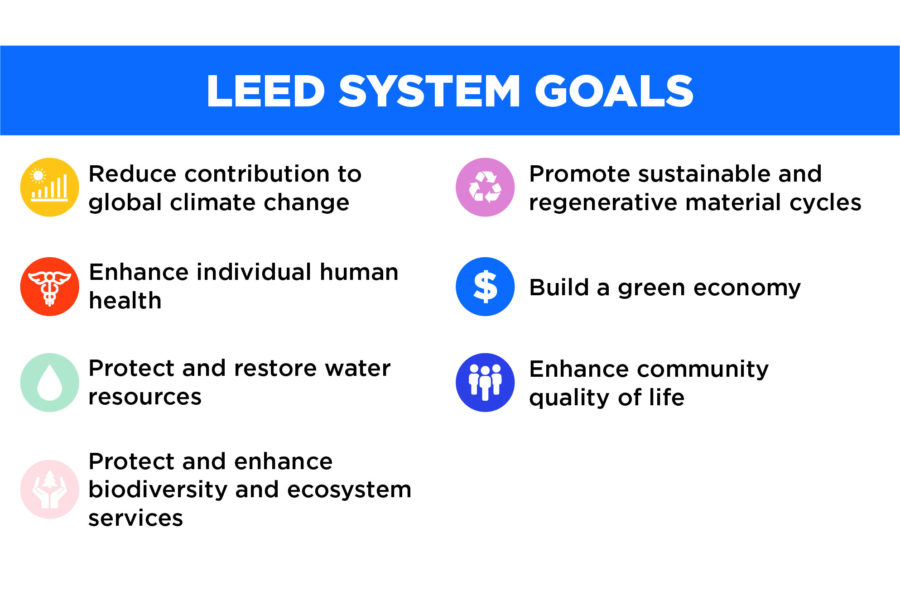
Courtesy of Aquafil
LEED is a globally recognized green building certification that recognizes best-in-class building strategies and verifies your building was built and designed sustainably. LEED-certified buildings promote better-built environments that complement the planet and enhance communities.
The LEED system focuses on places that give people better, brighter, and healthier spaces with seven goals.
Earning a LEED certification establishes you as a green building leader and differentiates your firm from the competition that is lagging behind.
Flooring is a key area where you can make an impact on your building’s embodied carbon while earning LEED credits. The USGBC does not certify building materials; however, specifying eco-friendly flooring contributes to your overall LEED application.
For example, specifying carpets made with ECONYL® regenerated nylon contributes to LEED v4 credits in four categories: integrative process, materials and resources, indoor environmental quality, and innovation.
Integrative Process
According to the USGBC, the integrative process takes a comprehensive approach to building systems and equipment to support high-performance, cost-effective project outcomes through an early analysis of the interrelationships among systems.
ECONYL® contributes to the integrative process credit by sharing our knowledge and experience creating sustainable materials with project teams to collectively enhance human comfort and environmental benefits. This includes enabling project teams to achieve project goals focused on quality and performance by securing targeted credits that ECONYL® yarns contribute to for LEED v4.
Materials and Resources
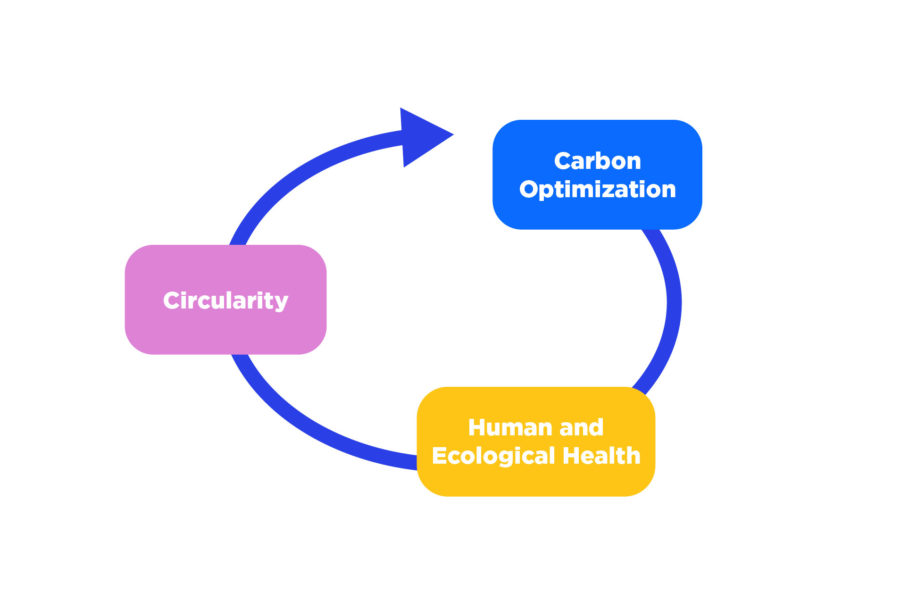
Courtesy of Aquafil
The Materials and Resources (MR) credit takes a holistic approach when evaluating the attributes of building materials. This credit focuses on promoting carbon optimization, human and ecological health, and circularity.
ECONYL® regenerated nylon is made from 100% waste instead of oil. For every 10,000 tons of ECONYL® raw material, 70,000 barrels of crude oil are saved, and 65,1000 tons of CO2 equivalent emissions are avoided. Using ECONYL® yarn offers up to 90% reduction in global warming potential compared to nylon from fossil sources.
Carpets made with ECONYL® contribute to building life cycle impact reduction and building product disclosure and optimization.
Indoor Environmental Quality
The Indoor Environmental Quality (EQ) category is an entire credit category dedicated to ensuring healthy indoor environments. The EQ category rewards decisions made by project teams about indoor air quality and thermal, visual, and acoustic comfort.
Green buildings with good indoor environmental quality protect the health and comfort of building occupants. As a low VOC material, ECONYL® contributes to the indoor environmental quality credit in the indoor air quality management plan.
Innovation
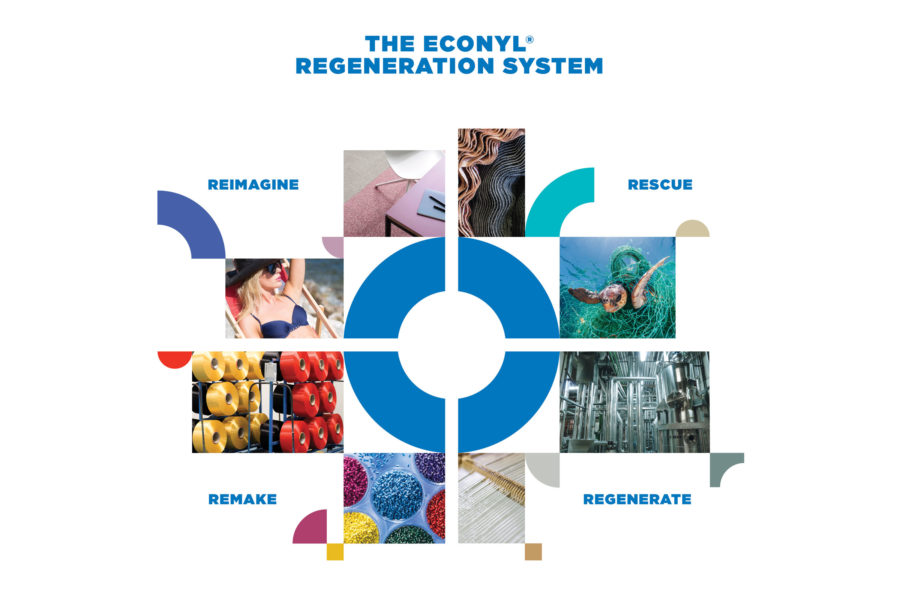
Courtesy of Aquafil
Sustainable design strategies and measures are constantly evolving and improving. New technologies are continually introduced to the marketplace and up-to-date scientific research influences building design strategies. The Innovation category recognizes projects for innovative building features and sustainable building practices and strategies.
ECONYL® is an innovative material driving the circular economy and closing the loop for the design industry. It contributes to the Innovation credit by advancing the circular economy through nylon regeneration, going beyond recycling, ECONYL can be regenerated an infinite number of times and perform just the same as virgin nylon.
So how do you find the right sustainable flooring for your project? What once was a long and exhaustive process can now be completed with one search.
Material Bank
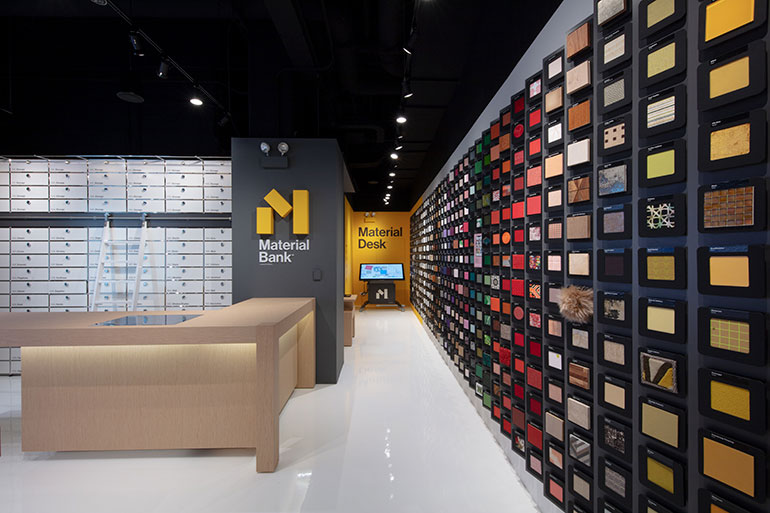
Material Bank. Photo courtesy of Aquafil
Material Bank is the world’s largest material resource library for the architecture and design industry, providing the fastest and most powerful way to discover and sample materials.
Specifying sustainable carpets for your next project has never been easier. Search ECONYL® regenerated nylon on the Material Bank library to find hundreds of beautiful eco-friendly options from leading brands, including FLOR, Interface, Milliken, Tarkett, and more.
Designers can filter searches by application, color, construction, pattern, and environmental benefits and standards to find the perfect flooring option that fits their project’s need without harming the environment.
Samples ordered by midnight Eastern Standard Time are delivered the next day at no cost. Material Bank offsets 100% of direct carbon emissions from all sample shipments, and samples can be easily returned to Material Bank for reuse, eliminating waste.
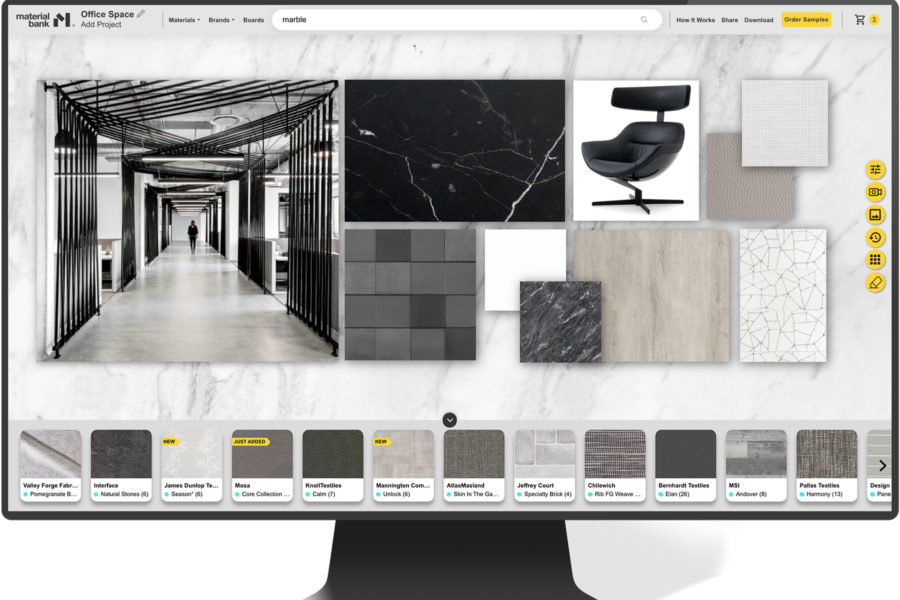
Material Bank also offers Material Desk, an innovative tool that gives designers the ability to create custom design boards and palettes in seconds. Courtesy of Aquafil
Material Bank also offers Material Desk, an innovative tool that gives designers the ability to create custom design boards and palettes in seconds. Material Desk is customizable for all your projects and gives users the ability to invite collaborators to contribute and are also shareable with teams and clients.
Find your next flooring options on Material Bank. Designers can join for free: https://www.materialbank.com/how-it-works.
Now is the time to design a better future. Knowing the materials we are using in buildings can substantially lower carbon emissions from the built environment and help ensure a safe, healthy environment for future generations. Change starts from the floor up. The time to adopt sustainable materials into your organization is now.

